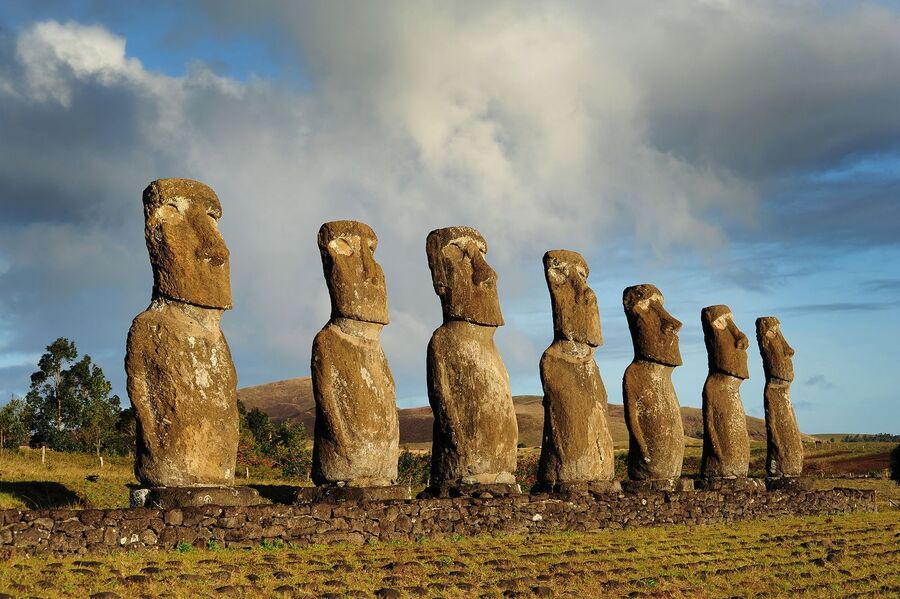
Prior research has shown that there were people living on Rapa Nui during the years 1000 to 1300, though their origin is still not known — those early settlers are most famous for their giant stone carvings of human figures.
In this new study, the research team found evidence that some of the settlers sailed all the way to the coast of South America and back. Such a voyage would have entailed sailing one way for 3,700 kilometers and likely would have taken anywhere from one to two months, depending on the weather.
Prior research has found that the oral history of the Rapu Nui people includes reports of at least one trip made by the early settlers to South America. In this new effort, the research team followed up on such reports by digging up and studying obsidian blades at a site called Anakena, the earliest known settlement on the island. The researchers found very small amounts of plant material on the blades, evidence that they were used to process plant-based food.
An analysis of the plant material showed evidence of cassava, breadfruit, purple yam, taro, achira, ginger and the Tahitian apple. Of those, the Tahitian apple and breadfruit stood out because neither grows naturally on Rapa Nui — and ginger had never been seen before in remote parts of Oceania.
Cassava, sweet potato and achira stood out for a different reason — all three are South American foods. They also noted that the sweet potato remnants were found in the deepest parts of the dig site, suggesting that they arrived on the island during the early years of the settlement.
The researchers conclude that early Rapu Nui settlers ventured to South America and back, perhaps several times. They further suggest that some of the food they brought back with them was planted and used to grow crops over the ensuing years.
More information: Paloma Berenguer et al, Identification of breadfruit (Artocarpus altilis) and South American crops introduced during early settlement of Rapa Nui (Easter Island), as revealed through starch analysis, PLOS ONE (2024). DOI: 10.1371/journal.pone.0298896
Journal information: PLoS ONE



Reader Comments
Where is proof that those plants were not growing naturally there back then ?
And by the way ... Another gross logical error.
Cutting plants is no proof of eating them. What about ornamenta trees & shrubs, or preparing wooden tools, handles and weapons ?
I am not impressed.
Its also a stretch to believe the blades were never washed and contained the traces of so many foods on them, note that they only list the "foreign" material found on the blades, not all the other stuff which was also presumably present
My first thought too. I love my edged tools and rely on them while away from civilization which means they are the cleanest things in my kit.
One person with his one hunting knife would clean it shiny after every use. I have my hunting knife, and it's shiny, but I have my machete and its coated, and the kitchen knives of tribes and communities are at a state between the two.